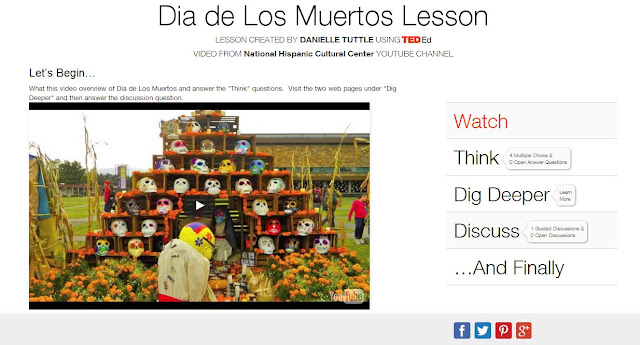A learner is like a box of chocolates...you never know what you're gonna get! I hope you recognize my shameless Forrest Gump plug. Hey, a classic is a classic! And in this case, this analogy couldn't be more perfect for describing learners today. In my previous posts, I've mentioned how the classroom is changing, and fast. I've talked about how gone are the days where students effectively learn by sitting and copying notes in a lecture type setting. Here we are living in a time where knowledge is everywhere, and one of the key skills we need to teach our students is how to access and use that knowledge which is all around us.
So how exactly is a learner like a box of chocolates? Well, based on Connectivism Theory, learning is no longer taking place exclusively within the human mind.
The Changing Nature of Knowledge says that
The leaners themselves, the connections they form with each other, the connections they form with databases, with other sources of knowledge, is really the primary point of learning. So in essence, the network becomes the learning. So as teachers, or future teachers, it is very important for us to remember that each student we will have in our classroom will be a source of valuable knowledge to us and to their classmates. It is impossible for one of us to know everything, and each student, like a box of chocolate, brings something new to the classroom. This could be a perspective, a learning style, a different culture, a piece of knowledge, a new technology, really, the options are limitless. It could even be a new way to connect and gain access to more knowledge. Each of us is a database with information ready to be shared. It is our responsibility as teachers to foster these connections and let students learn how to make their own connections, share knowledge, and explore for more.
To elaborate on
Connectivism, let me begin by saying this theory was new to me. If it's new to you too, the name more or less explains itself. In very simplified terms, it's about how learning in the present age is more connected than it was in the past. It's a theory which describes our current learning situation. In
Connectivism: A Learning Theory for the Digital Age, Siemens says that
Connectivism presents a model of learning that acknowledges the tectonic shifts in society where learning is no longer an internal, individualistic activity. That's right- learning is now very interconnected. Interconnected via books, via the internet and databases, and via all sorts of technologies which are readily and easily accessible. And this interconnected learning shouldn't be taking place only on a world-wide scale, but also should be happening within the walls of your classroom. Remember, your learners are like a box of chocolate- each with something unique to bring.
My final thought is are our classrooms teaching students to live in a connective age? Not necessarily. Siemens states that
The field of education has been slow to recognize both the impact of new learning tools and the environmental changes in what it means to learn. I included the cartoon here because when I started looking up more information on the theory I found some negative feedback. I think connectivism isn't not about teaching our students "how NOT to think," but rather, giving them the skills they need to access limitless information, think critically, and apply it. It's not about teaching mindlessness, but rather mindfulness and the power that lies in having access to mountains of information we never had before, and how to evaluate it properly. If we as teachers embrace connectivism, it will allows us to teach the skills necessary for our students to not only learn the required material, but to succeed in a digital age. With the skills and tools for how to search for answers and acquire new knowledge, our students will be equipped for whichever career path (or paths!) they head down in the future. To start embracing connectivism in your classroom, just remember our wise friend, Forrest. A learner is like a box of chocolates.... You never know what you're gonna get.
 Listening is a key skill required for foreign language learning, and often students aren't exposed to it (or variations of it) enough. My suggestion today is: Podcasts. I think they are a great way to UP the level of Spanish being heard by your students and to help take away the "fear" so often associated with these types of listening activities. Actually, a creative teacher can turn these listening activities with Podcasts into something fun! WebSpanish at Podomatic.com has a ton of short 2-3 minute audio podcasts from beginner to upper intermediate which you can easily find time for in your classroom.
Listening is a key skill required for foreign language learning, and often students aren't exposed to it (or variations of it) enough. My suggestion today is: Podcasts. I think they are a great way to UP the level of Spanish being heard by your students and to help take away the "fear" so often associated with these types of listening activities. Actually, a creative teacher can turn these listening activities with Podcasts into something fun! WebSpanish at Podomatic.com has a ton of short 2-3 minute audio podcasts from beginner to upper intermediate which you can easily find time for in your classroom.



















